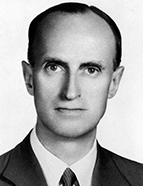

This stay abroad allowed him to specialise in the archaeology of medieval architecture and to get to know French architecture in depth, especially Romanesque and Gothic architecture. He also travelled to other European countries, such as Germany, Belgium and England, studying the major medieval monuments there and visiting the largest art and antiquities museums in those countries. His study of Évora Cathedral, published in 1935 when he was only thirty years old, was instrumental in obtaining this grant. In his first study, we can already see the importance that architectural photography would have in his working method and in illustrating his arguments, substantially improved during his time in France. Mário Tavares Chicó was also one of the few art historians who valued the authorial role of the photographers he worked with, highlighting them as co-authors of some of his published studies.
On his return to Portugal, in 1940 , he completed an internship at the national museums in Lisbon, which qualified him as an assistant museum curator. Between 1940 and 1943, he was involved in the design of the Lisbon City Museum as its curator. In 1943 he won the competition to become director of the Évora Regional Museum and in 1946 he was appointed professor of Aesthetics and Art History at the Faculdade de Letras da Universidade de Lisboa [ School of Arts and Humanities of the University of Lisbon ] , holding these two positions until his death in 1966. He was also a member of the Academia Nacional de Belas Artes [ National Academy of Fine Arts ] and organised numerous exhibitions in Portugal and abroad, especially in Brazil. At the University he taught subjects dedicated to the Art of the Middle Ages in the West, Gothic Art in Portugal, Portuguese Art in Brazil and India and Hindu Art. He was probably the first art history lecturer at the Faculdade de Letras [ School of Arts and Humanities ] to use slide shows in his regular teaching activities and was part of the committee overseeing the new school building, built in the Cidade Universitária, working closely with the architects Porfírio and António Pardal Monteiro.
This work is financed by national funds through FCT - Foundation for Science and Technology, I.P, in the scope of the projects UIDB/04311/2020 and UIDP/04311/2020.
